
PLA Military Aerospace Force: On the Frontier of Innovation and Competition
Publication: China Brief Volume: 25 Issue: 13
By:

Executive Summary:
- The People’s Liberation Army (PLA) Aerospace Force (ASF) is structured to rapidly integrate space-based surveillance, targeting, and offensive capabilities into any conflict involving the PLA, signaling Beijing’s strategic anticipation of conflicts over Taiwan or the South China Sea.
- By consolidating the People’s Republic of China’s (PRC) diverse military space assets, the ASF centralizes domain awareness and counter-space operations, significantly enhancing the PRC’s ability to conduct precision strikes and counterintervention operations against the United States.
- The ASF’s seven primary “space bases” anchor the country’s space capabilities, with specialized units managing critical missions including satellite launches, space domain awareness, and early missile warning, reflecting deep reform and strategic prioritization within the PLA.
- The ASF has driven technological advancements in space-based surveillance and anti-satellite weaponry, positioning the PRC to exploit vulnerabilities in U.S. military reliance on satellites—critical in Beijing’s strategy of denying adversary space operations. (In other words, “no satellite, no fight”).
On April 19, 2024, the People’s Liberation Army (PLA) eliminated the Strategic Support Force (SSF; 战略支援部队). It reconstituted its subordinate components into three distinct arms (兵种), each directly subordinate to the Central Military Commission (CMC), the highest-level body within the Chinese armed forces (China Brief, April 26, 2024). These organizations include the Cyberspace Force (网络空间部队; Cyberspace Force), the Information Support Force (ISF; 信息支援部队), and the Aerospace Force (ASF; 军事航天部队). One year on from its formation, analysis of thousands of recruitment notices, public procurement documents, academic publications, and news coverage, sheds light on the Military Aerospace Force (ASF; 军事航天部队). [1]
Aerospace Force Space Bases
The ASF does not maintain as rigid a structure as other services or forces, such as the Cyberspace Force; nor does it strictly align with the regional Theater Command (战区) construct. This indicates that its mission is strategic and functional rather than directly supporting individual Theater Commands. [2] The core structural elements of the ASF comprise seven primary “space bases” (航天基地) that undertake the majority of the ASF’s principal operational functions. Notably, Base 35, responsible for Battlefield Environment Support (战场环境保障), was reassigned to the newly established Information Support Force (ISF; 信息支援部队) following the disbandment of the SSF last year. In terms of command structure, the Aerospace Force does not appear to be divided into Theater sub-commands; rather, its bases report to the ASF Headquarters, which in turn interfaces with the joint Theater Commands as needed. This means that in a conflict, ASF units would provide support to all Theater Commands (for targeting, communications, navigation, etc.) and execute strategic missions under central CMC direction (CASI, December 2022).
The ASF inherited these bases from the former General Armament Department (GAD; 总装备部) when it was created within the SSF in 2016. Over time, evidence suggests that clear distinctions have emerged between the testing and operational aspects of each base’s infrastructure, organization, and operations. For instance, Base 21 (a.k.a. the Malan Nuclear Test Base) appears to have incorporated Base 33 (a former GAD test base in Luoyang specializing in electronic warfare) and was treated separately from the ASF under the SSF. These units were transferred to the Central Military Commission Equipment Development Department (CMC-EDD; 中央军委装备发展部) upon the SSF’s dissolution in 2024 (Author research, 2025). However, the ASF’s various bases appear to have some level of presence at Base 21, indicating potential dual management responsibilities or a division of labor focused on advanced testing operations. The ASF also frequently collocates personnel from different units (or whole units themselves) within facilities or centers, with each unit detachment taking on different roles within that center’s mission. This is particularly the case when such units have substantial overlap or intrinsically shared missions. Two good examples include Base 26, which is responsible for telemetry, tracking, and command (“TT&C”), as well as space tracking; and Base 37, with is responsible for space surveillance and early warning.
Complementing the space bases, the ASF encompasses various bureaus and specialized centers tasked with providing critical support and assurance for space missions. These entities include the Aerospace Reconnaissance Bureau (ARB; 航天侦察局), which was previously under the Second Department of the General Staff Department (2PLA; 总参二部); the Beijing Aerospace Flight Control Center (AFCC; 北京航天飞行控制中心); the Beijing Satellite Main Station (北京卫星地面站); the Special Engineering Technology Corps (特殊工程技术兵团); the Beijing Institute for Tracking and Telecommunications (北京跟踪与通信技术研究所); the Beijing Institute of Applied Meteorology (北京应用气象研究所); and the China Astronaut Research and Training Center (中国航天员科研训练中心). These components were variously inherited from the GAD and the General Staff Department’s First and Second Departments (总参二部) (Institute for National Strategic Studies, October 2018).
The SSF appears to have been highly judicious in allocating new military unit cover designators (MUCD; 军事代号). The ASF has been assigned a portion of the 32001–32100 MUCD block previously allocated to the SSF, generally occupying the range of 32011 to 32045, though there are exceptions. Typically, former GAD bases and subordinate units retained their original designations (the former GAD’s 63000 block), as did former General Staff Department units (61000 block MUCDs). New MUCDs are generally assigned only when a unit enters a new operational structure or echelon without a previous designation, or when its parent or previous designation is already occupied. This practice commonly occurs within the ASF when units are elevated or split—as with Base 35 and its subordinate elements—or entirely newly established—as is the case with Bases 36 and 37. Because the ASF primarily consists of semi-independent, division-echelon “bases” (基地), there was little impetus or need to assign new MUCD designators beyond these specific circumstances. [3]
Overview of the Seven Primary Bases
Base 23: China Satellite Maritime Tracking and Control Department
Base 23, or the China Satellite Maritime Tracking and Control Department (中国卫星海上测控部), is assigned the cover designator of Unit 63680 and is located in Jiangyin, Jiangsu Province on the east coast of the People’s Republic of China (PRC). It maintains additional unit locations in Shanghai and Xinzhou, with the latter likely collocated with Base 25 elements. Base 23 is the PLA’s only oceanic telemetry, tracking, and control unit. It operates the Yuanwang-class space tracking ships and associated facilities, providing mobile tracking and relay coverage for satellite launches and intercontinental missile tests over the open seas (The Paper, March 15, 2016). This corps leader-grade unit is essential for extending the PRC’s TT&C network beyond its land coverage. Under the ASF, Base 23 continues to ensure the PRC can track spacecraft and missiles throughout their flight. This is a critical support function for launches from any of the country’s space centers, as well as for global space situational awareness. The unit also coordinates transportation of launch vehicle stages by sea (e.g. delivering rockets to the Wenchang Launch Center in Hainan) (USCC, March 30, 2020).
Base 25: Taiyuan Satellite Launch Center
Base 25, or the Taiyuan Satellite Launch Center (TSLC; 中国太原卫星发射中心), is assigned the cover designator 63710 and is situated in the mountains of Shanxi Province (Kelan County, near Wuzhai or Xinzhou). It maintains unit locations in Taiyuan proper, Xinzhou, and Yinchuan. Due to its high latitude, Taiyuan specializes in launching satellites into polar and sun-synchronous orbits, including meteorological, earth-observation, and military reconnaissance satellites. It is also used for testing medium-range ballistic missiles and anti-ballistic missile systems (given its inland location and instrumented test range). Under the ASF, Base 25 continues these functions and likely coordinates closely with the PRC’s missile forces for testing kinetic interceptor technologies (USCC, March 30, 2020). Often called the “Wuzhai” (五寨) base in military context, it remains a key node for both space launches and strategic missile testing, reflecting the dual-use nature of aerospace technology.
Base 26: Xi’an Satellite Control Center (XSCC)
Base 26, or the Xi’an Satellite Control Center (XSCC; 中国西安卫星测控中心), is assigned the cover designator 63750 (63750部队) and is headquartered in Xi’an, Shaanxi Province (with facilities in the suburb of Lintong). It maintains a vast network of facilities across the PRC, with units stationed in Weinan, Sanya, Xiamen, Harbin, Qingdao, Kashgar, Tianjin, Lingshui, Jiamusi, Kunming, Nanning, Shantou, Mudanjiang, Chengdu, Urumqi, Changchun, and Beijing. Base 26 serves as the land-based backbone of the country’s space TT&C network. This corps leader-grade organization manages a worldwide network of ground stations and control centers, including the Xi’an Satellite Control Center itself and the Beijing Aerospace Flight Control Center (BACC). Base 26 is responsible for monitoring and controlling satellites in orbit, sending telecommands, and receiving telemetry and mission data. It also oversees tracking assets at various sites across the PRC and abroad. Notably, Beijing’s Flight Control Center, which handles crewed Shenzhou missions and high-priority satellite operations, is subordinated to this base (USCC, March 30, 2020). The consolidation of TT&C under Base 26—and its close integration with Base 37’s Space Situational Awareness (SSA) tasks—gives the ASF central control over both routine satellite operations and detection of foreign space objects.
Base 27: Xichang Satellite Launch Center
Base 27, or the Xichang Satellite Launch Center (XSLC;中国西昌卫星发射中心), is assigned the cover designator 63790 and is based in Xichang, Sichuan Province. Base 27 has likely incorporated the Wenchang Space Launch Site (文昌航天发射场) and maintains key facilities in other locations including Jingshan, Haikou, Yibin, Guiyang, and Chengdu. Base 27 is the PRC’s primary site for launching satellites to geostationary orbit (GEO) and high-altitude orbits. It has been operational since the early 1980s and was the launch site for the PRC’s first communications satellites and Beidou navigation satellites. Base 27 also oversees the newer Wenchang Space Launch Site on Hainan Island, a coastal launch complex used for heavy rockets such as the Long March 5 and 7. As such, Base 27 handles the country’s most powerful launch vehicles and many military communications, weather, and ISR satellite deployments. It was notably the launch site for the infamous 2007 anti-satellite weapon (ASAT) test that destroyed a satellite in orbit (USCC, March 30, 2020). Under the ASF, Base 27 continues to be critical for accessing high-value orbits and likely coordinates closely with Base 26 and Base 37 for launch tracking and space domain awareness. Its control of the Wenchang site also positions it at the forefront of the PRC’s crewed spaceflight and deep-space ambitions.
Base 35: Battlefield Environment Support Base
Base 35, or the Battlefield Environment Support Base (BESB; 战场环境保障基地), is a newly-formed corps leader-grade base. Headquartered in Wuhan, Hubei Province, at a facility formerly owned by one of the former GSD’s former survey, mapping, and navigation units (Unit 61175), Base 35 has been assigned the cover designator 32020. It integrates various missions related to geodetic survey, mapping, satellite navigation, and other space-based support operations (USCC, March 30, 2020). Base 35 essentially took over responsibilities that were formerly under the GSD’s survey & mapping bureau and the Beidou Navigation Satellite System ground segment. By bringing these together in one base, the ASF has created a dedicated organization to manage positioning, navigation, and timing (PNT) support for the military, as well as mapping and geospatial intelligence from satellite imagery.
Figure 1: Base 35 Headquarters in Wuhan
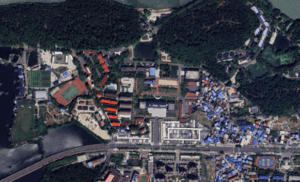
(Source: Author)
Base 35 oversees five subordinate centers, incorporating the former Beijing Satellite Navigation Center (BSNC; 北京卫星导航中心), Unit 61081; the Meteorological, Hydrological, and Space Weather Main Station (气象水文和空间天气总站), Unit 61741; and the Tianhui Satellite Center (中国天绘卫星中心), Unit 61618, among others. It oversees a five regional Battlefield Environment Support Centers (战场黄静保障中心) that align to the five military theater commands (Author research, 2025). These regional centers were formed from the former General Staff Department Battlefield Environment Support Bases (before “base” was established as a division leader-grade echelon) which were themselves drawn from former military region survey, mapping, and navigation units.
Base 36: Kaifeng Base
Base 36 is wholly new unit assigned the cover designator 32026 and headquartered in the former 20th Group Army’s headquarters in Kaifeng, Henan Province (Shanqiu Normal University, April 13, 2016; China Defense Blog, July 1, 2017). It appears to be focused on space equipment research and development (R&D), testing, and evaluation. Involved in advanced technology research, development, testing, and evaluation, it likely consolidates what used to be several GAD research or proving ground units. Base 36 also has a presence in Haidian District Beijing, Hedong District Tianjin, Xi’an, and Bayingolin (巴州) in Xinjiang (Author research, 2025). Its charter, as described in Chinese sources, is to “undertake weapons and equipment requirements demonstration, testing, appraisal, and evaluation” for space systems. In practice, this means Base 36 is where new satellite technologies, anti-satellite arms, or space launch hardware are tested and integrated into the force. For example, reports note that Base 36 units have participated in exercises involving electronic warfare and space-information confrontation alongside other services (CASI, December 11, 2023).
Figure 2: Base 36 Headquarters in Kaifeng
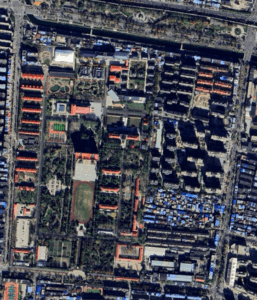
(Source: Author)
Base 37: Early Warning Base
Base 37 is a wholly new unit assigned the cover designator 32035 and based out of Lintong District Xi’an, Shaanxi Province, in the former 47th Group Army’s headquarters (Baidu Baike, December 12, 2011; Shaanxi Tenders Platform, accessed July 11). [4] It has four principal locations in Chongqing, Urumqi, Jinan, and Hangzhou (Bilibili, March 7, 2023). It is focused on SSA and missile early warning, being charged with identifying, tracking, and cataloguing foreign space objects (satellites and debris) and providing timely warning of potential threats to PRC satellites or of incoming missiles (CASI, September 11, 2023). It has merged units from various sources: some tracking and sensor departments carved out of the Xi’an Control Center (Base 26), elements of the Air Force’s early-warning radar units, and probably new observational assets. Base 37 operates at least several large phased-array radar (LPAR) sites across the PRC—open-source evidence shows it now controls radars in Qinghai and Yunnan that were previously operated by the PLA Air Force. By consolidating these under ASF, the PLA aims to build an integrated space surveillance network that can both track adversary satellites (for intelligence or targeting purposes) and detect ballistic missile launches in real time. By improving the PLA’s ability to observe and interpret actions in space, Base 37 enhances both the defensive and offensive potential of the Aerospace Force (for example, distinguishing natural anomalies from hostile interference on satellites, or cueing ASAT units to target enemy spacecraft) (CASI, September 11, 2023, December 11, 2023, September 16, 2024).
Figure 3: Base 37 Headquarters in Lintong, Shaanxi Province
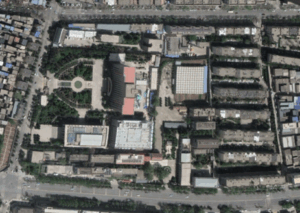
(Source: Author)
Figure 4: Base 37 Unit 32036 in Nanchuan, Chongqing as of 2022 (Geo: 29.112573° 107.323694°)
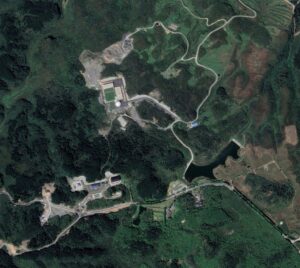
(Source: Author)
Figure 5: Base 37 Unit 61191 in Hangzhou Xihu District (Geo: 30.247261° 120.056707°)
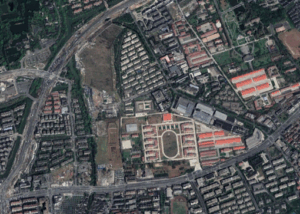
(Source: Author)
Notably, some tensions and overlaps remain as the ASF carves out its domain. For example, the PLAAF still controls active air-defense missile units and some space surveillance assets (like space tracking telescopes) which were not immediately shifted to ASF (CASI, September 11, 2023; The Diplomat, February 20). As of late 2024, analysts observed possible frictions over the Large Phased Array Radars: both the PLAAF and ASF could end up operating parallel networks of missile-warning radars if not resolved (CASI, September 16, 2024). However, the general trend is that the Aerospace Force will assume increasing responsibility for space control missions, allowing the PLAAF to focus on the air domain. Coordination mechanisms are likely being developed at the CMC Joint Staff level to ensure seamless integration of ASF’s space picture with air and missile defenses managed by the Air Force or Rocket Force (The Diplomat, February 20).
The High Ground of PLA Modernization
The establishment of the PLA Aerospace Force is more than an administrative reform. It is a strategic statement about how the PRC views the role of space in modern military competition. In Chinese military literature, space is frequently referred to as the “commanding heights” (制高点) of future warfare, and the ASF’s creation demonstrates the PLA’s resolve to secure that high ground. Several implications stand out:
First, space is integral to joint operations. By placing all military space capabilities under one service, the PLA seeks to ensure that space assets can be centrally managed and rapidly brought to bear in a conflict. As with the parallel Cyberspace Force and Information Support Force, the ASF is a bellwether of conflicts Beijing is preparing for. This means the ASF will be a leading indicator of the conflicts the PRC anticipates in space.
As such, the ASF is expected to play a pivotal role from the very outset of any conflict involving the PRC, particularly in scenarios centered on Taiwan or the South China Sea. Crucially, the ASF’s capabilities in space-based surveillance position it as an essential element in the PRC’s strategy for counterintervention against the United States. Chinese strategic thinking emphasizes achieving dominance in the space domain—securing it for PRC use while denying access to adversaries. This reflects their doctrinal view that the U.S. military heavily relies on satellite capabilities, succinctly captured in the phrase “no satellite, no fight” (无星不战) (FX361, July 22, 2016). Space-based surveillance also is indispensable for maintaining domain awareness in both the East and South China Seas, as well as in space itself. It enables the PRC to defend potential invasion operations and to create targeting opportunities against U.S. carrier strike groups, thus effectively employing long-range ballistic missile standoff weapons. During initial phases of a conflict, the ASF would deploy navigation satellites to guide precision missile strikes, use ISR satellites for target acquisition, and employ ASAT weapons to disable or destroy enemy command, control, communication, computer, intelligence, surveillance, and reconnaissance (C4ISR) capabilities (China Brief, April 25).
Table 1: Aerospace Force Base Names and Military Unit Cover Designators
| Name (English) | Name (Chinese) | MUCD | Address/Location |
| Base 35 (likely the Battlefield Environment Support Base) | 第三十五基地(战场环境保障基地) | Unit 32020 | No. 15, East Lake East Road, Wuhan (武汉市东湖东路15号) Geo: 30.535464°, 114.386265° |
| Base 36 (Unknown Name) | 第三十六基地 | Unit 32026 | No. 68 Weidu Road, Gulou District, Kaifeng (开封市鼓楼区魏都路68号) Geo: 34.780264°, 114.327976 [a] |
| Base 37 (Unknown Name) | 第三十七基地 | Unit 32035 | No. 11 Huancheng East Road, Lintong District, Xi’an (陕西省西安市临潼区环城东路2号)
Geo: 34.369242°, 109.214786[b] |
(Source: Author Research)
[a] http://new.hnzhaobiao.com/info_show.asp?id=2201899.
[b] https://d.wanfangdata.com.cn/patent/CN202310158118.6.
Second, the ASF provides centralized space intelligence and attack capabilities, unencumbered by inter-service rivalries. Its technical reconnaissance satellites and the processing centers that interpret their data are unified, theoretically enabling faster targeting cycles and a more complete situational picture for decision-makers. At the same time, the ASF controls the PRC’s counterspace arsenal, including jamming units and direct-ascent ASAT missiles, through structures like a probable “Space Operations Base” (analogous to the Cyberspace Force’s Cyberspace Operations Base for offensive cyber). In the cyberspace domain, consolidation has been linked to an observable leap in sophistication of PLA operations (China Brief, April 25). We can expect a similar effect in space: a unified ASF command likely drives improvements in training and operational discipline for units tasked with satellite attacks or defenses, making the PRC’s space operations more coordinated and effective, and constituting a truly global intelligence apparatus.
Third, the ASF emphasizes space control and counterspace. The very name “Military Aerospace Force” (as opposed to just “Space Support Force”) indicates a broad mission set including space combat. In an analogy to air superiority, Chinese writings on military strategy increasingly speak of gaining “space superiority” (制天权) (NDU Press, February 5, 2019). The ASF’s formation comes amid evidence that the PLA’s risk tolerance in space is growing. Over the past decade, the PRC has become more willing to engage in provocative or risky behavior in space to achieve strategic goals (RAND, June 24, 2024). With the ASF in charge, such activities (e.g. closely shadowing foreign satellites and testing co-orbital inspector satellites that could double as weapons) may further intensify under a clear military chain of command.
The ASF also synergizes with PRC’s push on ballistic missile defense (BMD). Space and missile defense are entwined, as early warning satellites and radars (now under the ASF) must cue interceptor missiles (still under the PLAAF or Rocket Force). By prioritizing the build-up of Base 37’s capabilities, Beijing is signaling its intent to create a credible BMD system—something that was previously limited by organizational divides (The Diplomat, February 20). This will not only protect the PRC’s homeland and forces but also complicate adversary planning by introducing uncertainty about the effectiveness of their missile arsenals.
Fourth, the ASF will drive technological advancement. The ASF is able to champion cutting-edge technologies vital for the next generation of warfare. Whether deploying satellite constellations for global surveillance, developing directed-energy weapons to target satellites, or fielding rapid-launch “responsive space” capabilities, the ASF provides a focused command to drive these projects. For example, Base 36’s work on co-orbital interference and laser ASAT suggests the PLA is investing in novel means of space attack beyond traditional missiles (CASI, December 11, 2023). Likewise, the integration of multiple sensor types under Base 37 will spur advances in data fusion and space domain awareness software. In sum, the ASF serves as a custodian of the PRC’s military space modernization, aligning academic, technical, and operational communities toward the goal of making the PLA a peer competitor in space to the United States.
Conclusion
The PLA Aerospace Force has rapidly become a core component of the PRC’s military might. Its formation marks the culmination of a decades-long evolution of the country’s space efforts, from the early missile and satellite tests of the Mao era, through the informatization drive of the 2000s, into a new era where space is central to multi-domain “system-of-systems” warfare. By structuring the ASF with dedicated bases for launch, support, and combat operations in space, the PRC has laid the groundwork for strategic advantages in any conflict that extends to the space domain. As Beijing continues to modernize its forces, the Aerospace Force will be on the front line of both innovation and potential confrontation, truly exemplifying the old adage: “Whoever controls space controls the initiative in war” (谁掌握太空,谁就掌握战争主动权) (China Social Sciences Net, July 30, 2023).
Notes
[1] A previous China Brief article covers the Cyberspace Force (China Brief, April 25). As in that article, not every source surveyed in the research for this article is disclosed in the present work.
[2] In this sense, it is similar to the PLA Rocket Force (火箭军).
[3] Initially, it appeared that the SSF and ASF had allocated new cover designations in blocks of 5–10 assigned to each new base (i.e. Base 35 is 32020–32025, Base 36 is 32026–32034, Base 37 is 32035–32039). However, on further research this does not appear to be the case. There are too many exceptions to these rules for it to be said they were ever applied with consistency. That said, the ASF’s assignment of personnel and units—and their frequent collocation within facilities that may or may not be jointly owned or managed—complicated efforts to understand order-of-battle and unit assignment.
[4] The address of the former 20th Group Army is listed as No. 68 Weidu Road, Kaifeng (开封市魏都路68号) in 2016. This is the same address listed for Base 36 in 2018. (The 20th Group Army was disbanded in 2017.)
[5] The address of the 47th Group Army (also known as Unit 68310) is listed as No. 2 Huancheng East Road, Lintong District, Xi’an (西安市临潼区环城东路2号) in 2015. This is the same address listed for Base 37 in 2022. (The 47th Group Army was disbanded in 2018.)




